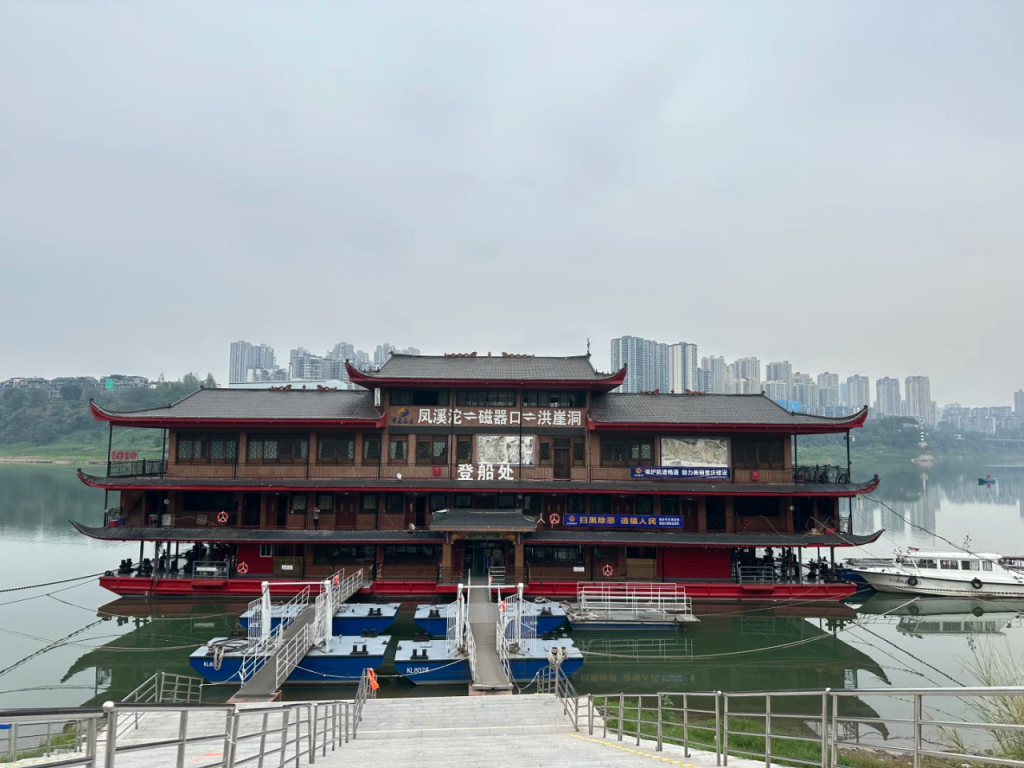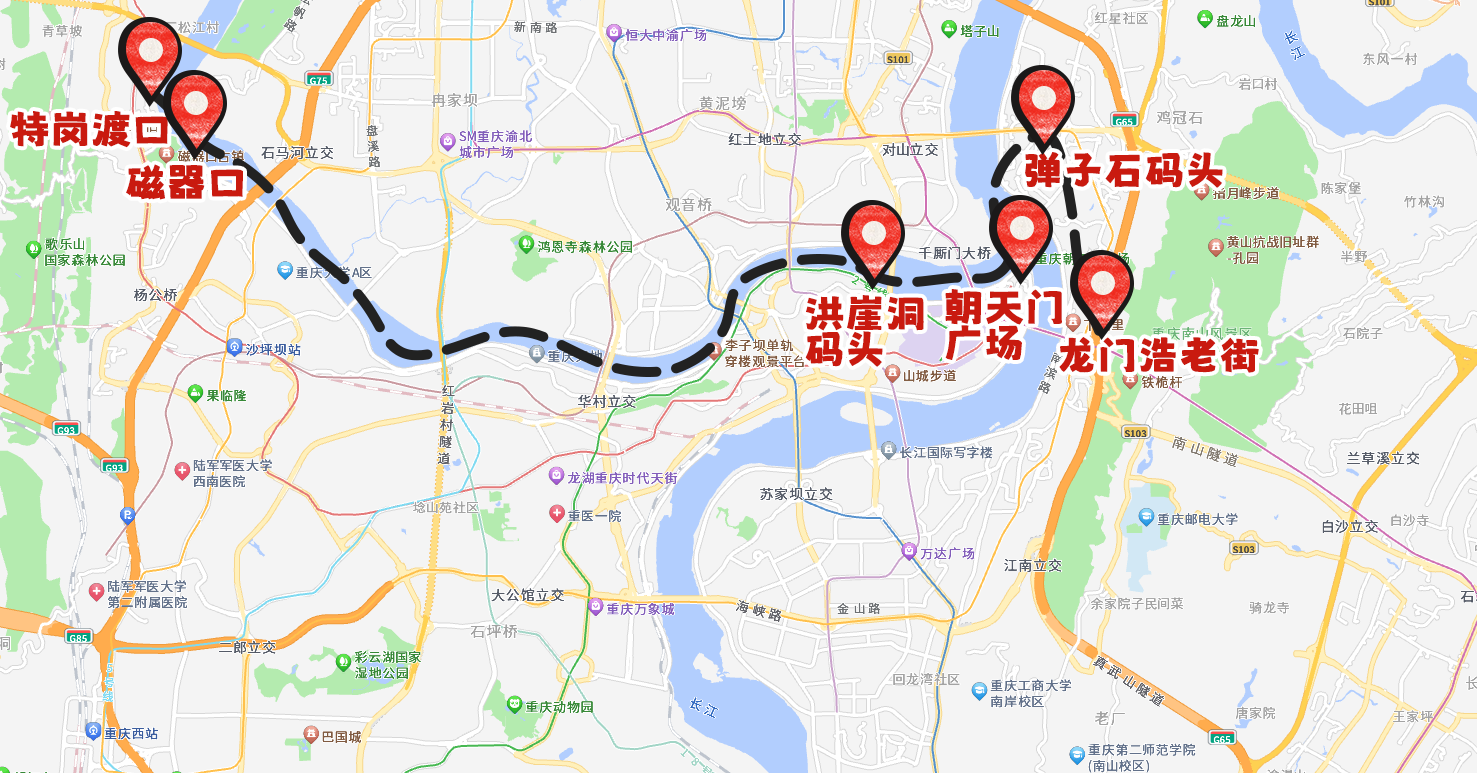Explore the culture of Chongqing wharf, and feel the windy past of the Jianghu!
Chongqing is a city born of water and prospered by wharves, with a history dating back to the pre-Qin period.
The Ba people lived by the water, using the water transportation to carry out trade activities, the initial wharf prototype was born.
Merchant ships traveled back and forth, and the sounds of yelling and hawking were intertwined, playing a prosperous music.

From ancient times to the present, Chongqing’s piers have witnessed countless stories and carried the city’s unique human spirit.
Today we start from Longmenhao, traveling along the lower reaches of the Yangtze River past the Bouncing Stone Quay to Chaotianmen Quay, and then upstream along the Jialing River all the way to the mouth of the Magnetic Weapons, to experience Chongqing’s wharf culture in depth.
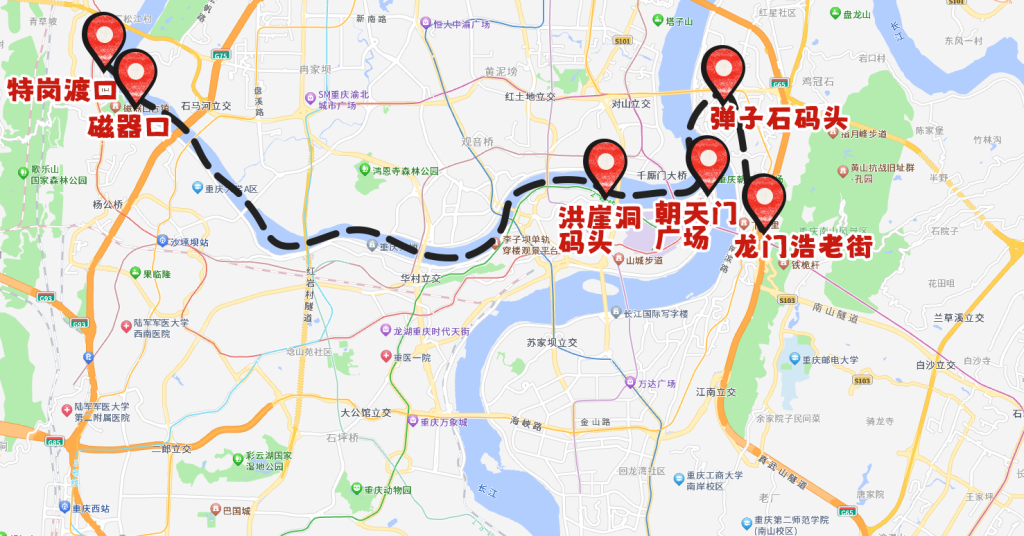
This route can be done in two days; one day will be rushed.
Itinerary
Day 1: morning tour [Longmenhao – under the Haoli old street] → and then to the bullet stone pier to take the [two rivers ferry] to the Hongyadong → afternoon to the [Chaotianmen Square] can be in the Raffles tour [Discovery Cabin – cloud paradise] → night to take the night tour of the two rivers of Chongqing (Chaotianmen dock boarding) to enjoy the night scenery of Chongqing.
Day 2: Morning stroll in the ancient town of Maguikou → In the afternoon, you can go to the Maguikou Tegang Ferry Terminal to take a boat back to Hongyadong Wharf.
01
Longmenhao – Lower Haoli Old Street
Tickets: Free
Opening Hours: All day
Address: Nanbin Road, Nanan District, Chongqing, China
Legend has it that in ancient times, there was a moraine about one kilometer long across the river in the area of Longmenhao.
There is a gap in the middle of this moraine, every dry season, the river here to form a wide body of water, the Ba people called “Hao”, and this gap is also known as “Haokou”, gap to the upstream section will be called ” The gap to the upstream section is called “Shanghao”, and the downstream section is called “Xiahao”.

About “Longmenhao” the origin of the name of this place has many sayings, one of which is that in the dry season, the moraine in the river seems to be a long dragon in the water, the gap in the middle will be called “Longmen”, and the village on the bank of the river is called “Longmenhao”.
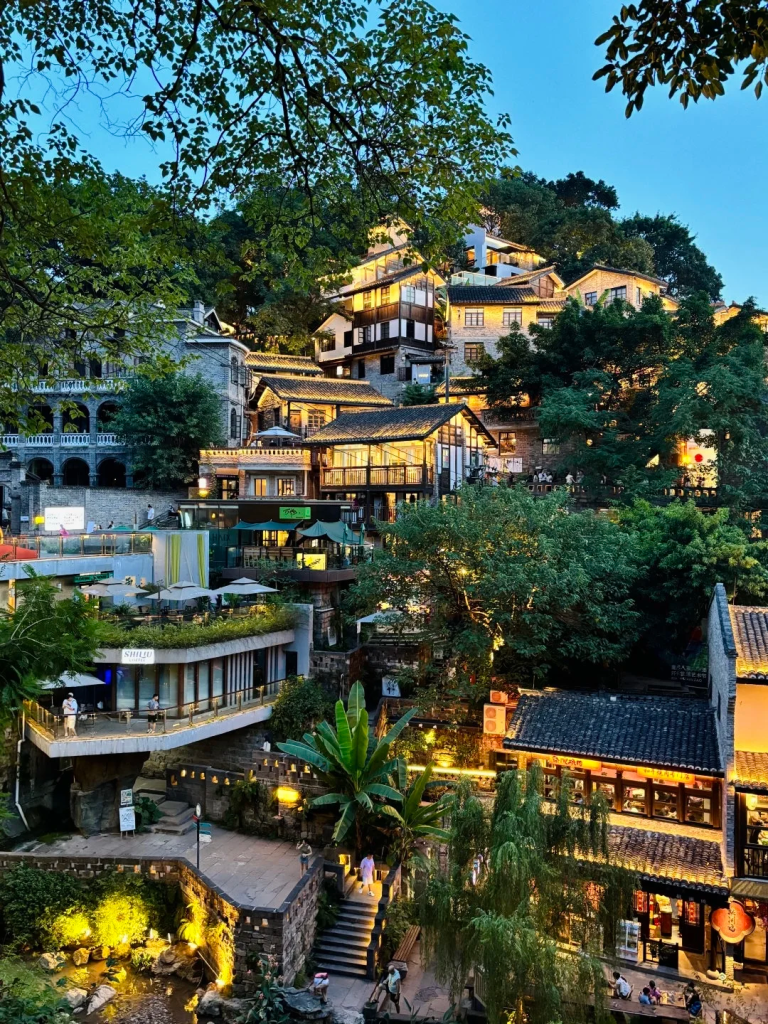
During the late Qing Dynasty, Chongqing was forced to open its port in 1890 after the signing of the Treaty of Yantai between China and the United Kingdom, and Longmenhao Wharf became an important shipping port due to its unique geographical location.
Foreign merchant ships came in droves, bringing western goods and culture, and making Longmenhao Pier one of the earliest windows to western civilization in Chongqing.
Until the Republic of China period, many foreign consulates, foreign banks and church schools were built around the pier, such as the former site of the French naval barracks.
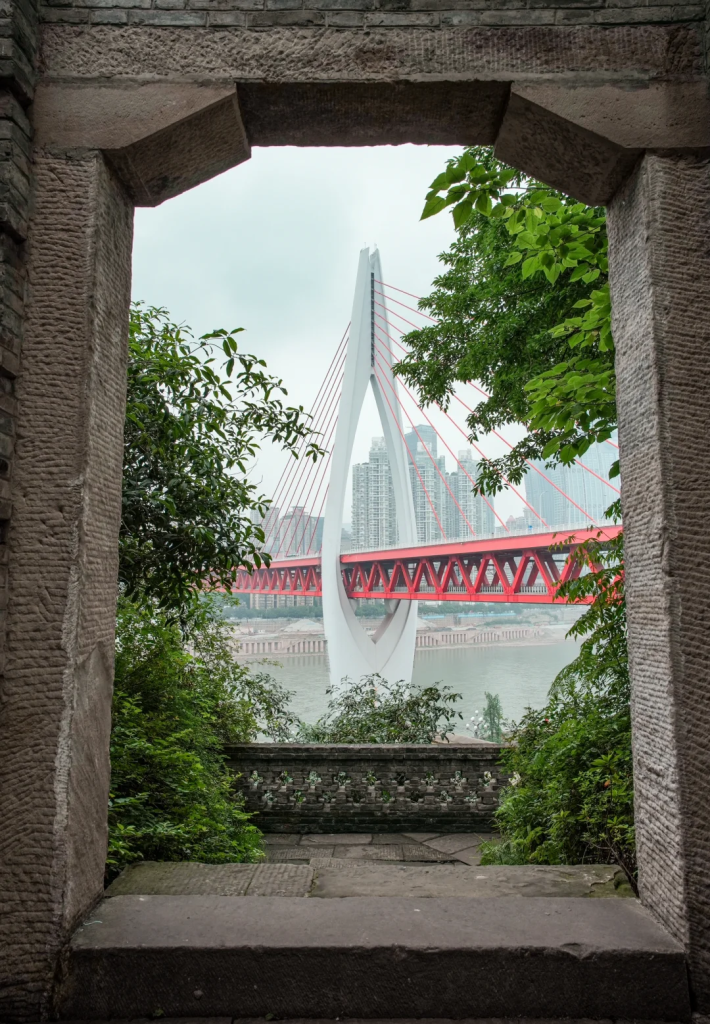
Longmenhao and Haoholi are worth a stroll, and inside the old streets built on the hillside and made of green stone bricks, there are surprises around the corner where thick history and modernity collide.
02
Ryanggang Kodo (Nostalgia Ferry)
Tickets: RMB 15 (one-way)
Danzishi Ferry Terminal Address: 150 meters southwest of the office building of Chongqing Branch of Industrial and Commercial Bank of China, Nanan District, Chongqing City
Hongyadong Ferry Terminal Address: Near the Second Hospital of Chongqing Medical University, Jialing River Road, Yuzhong District, Chongqing, China
Come out of Longmenhao Old Street and walk along Nanbin Road all the way to Bouncing Stone, along the way you will pass by Ciyun Temple, Bell Tower Square, etc. If you have time or are interested you can visit these places.
Then go to Bouncing Stone Pier to take the Two Rivers Xiao Ferry (nostalgic ferry) to Hongyadong Pier.
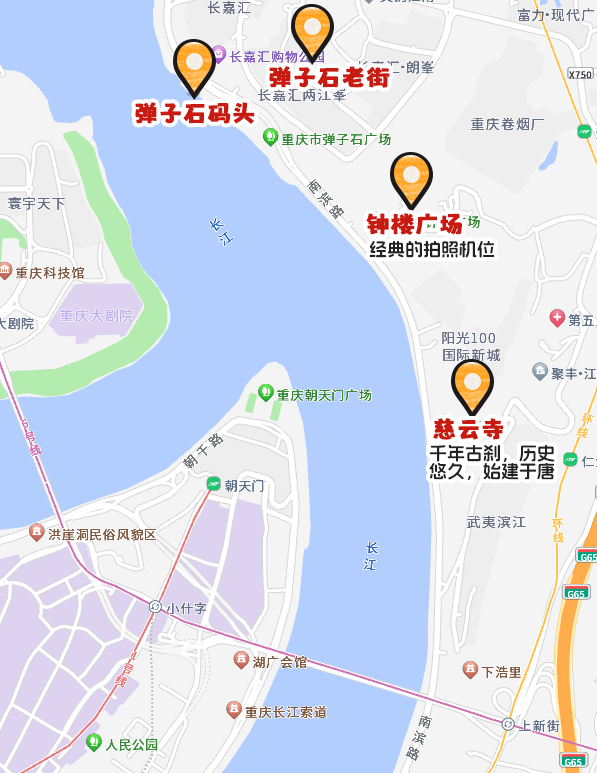
For the old Chongqing people, no matter how far back in time, the ferry is one of the most unforgettable memories.
In the heyday of the ferry, the number of ferries reached 36, with as many as 19 routes, and people called it “river boat”.
Within 10 minutes of traveling to the middle of the river, you can see all the famous sights of Nanan, Yuzhong and Jiangbei at a glance. On the open-air deck, you can also feel the river breeze, which is very pleasant.
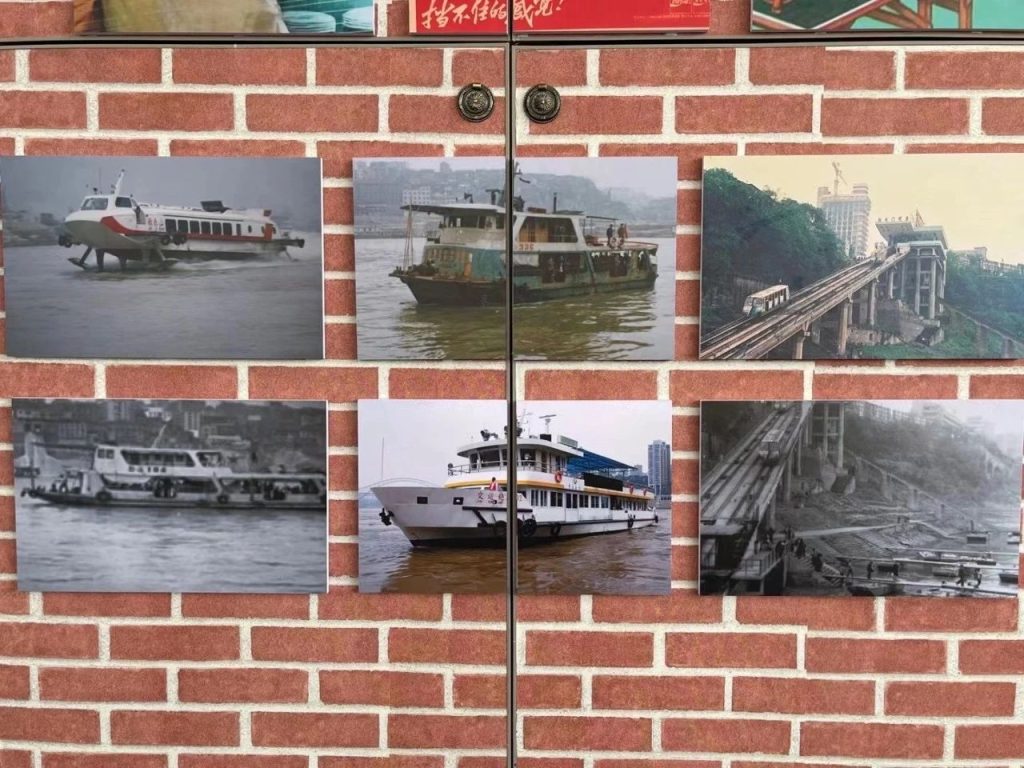
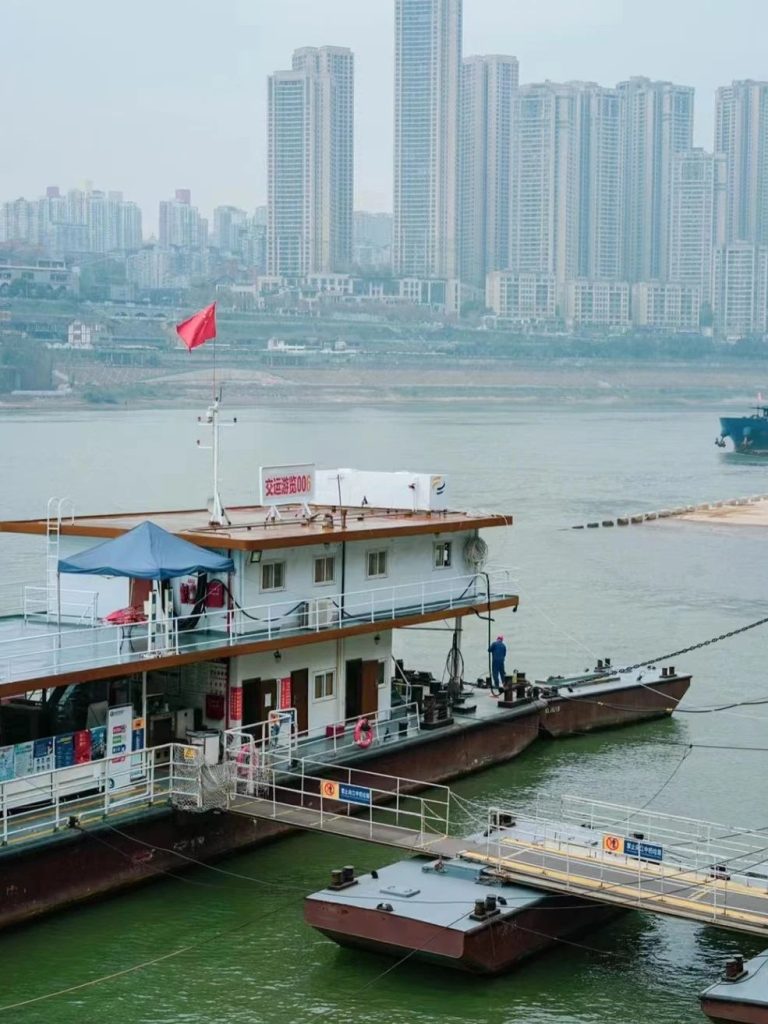
03
Hongyadong
Tickets: Free
Address:No.88, Binjiang Road, Jialing River, Yuzhong District, Chongqing, China
After the outbreak of the Anti-Japanese War, Chongqing became the accompanying capital, and a large number of refugees poured in. Hongyadong became a shelter for the poor and refugees due to its secluded terrain and proximity to the riverbank.
With the development of the times, some businessmen began to invest in the renovation of Hongyadong in 2006, preserving the form of hanging footstools and creating a unique historical and cultural neighborhood in China.

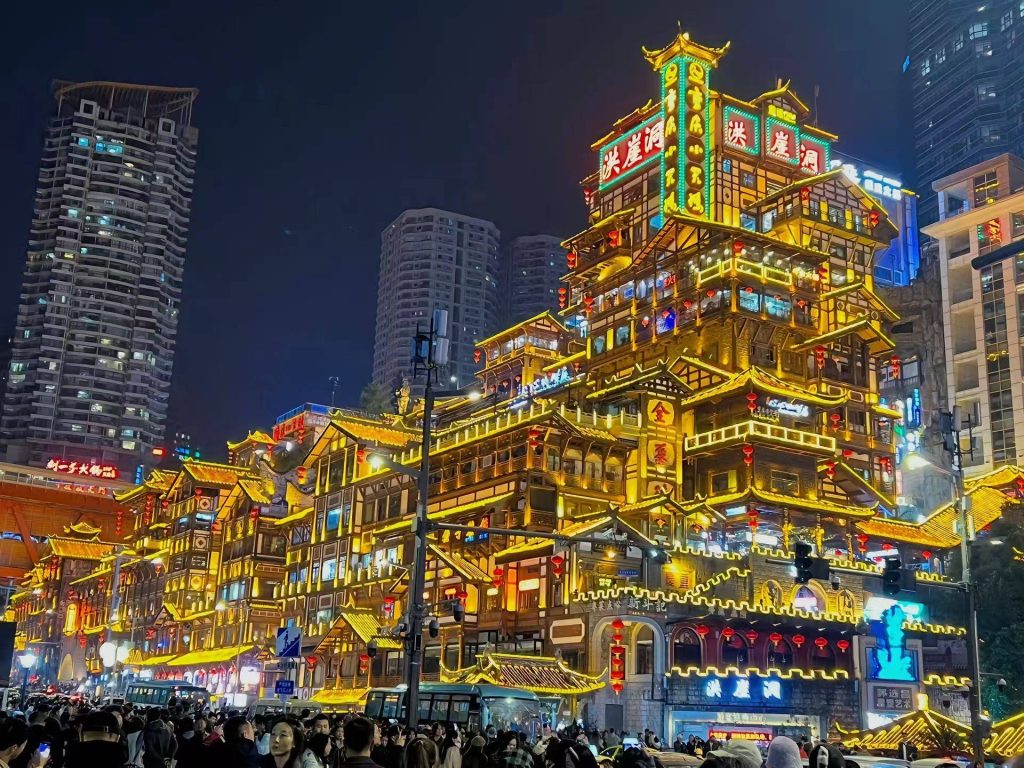
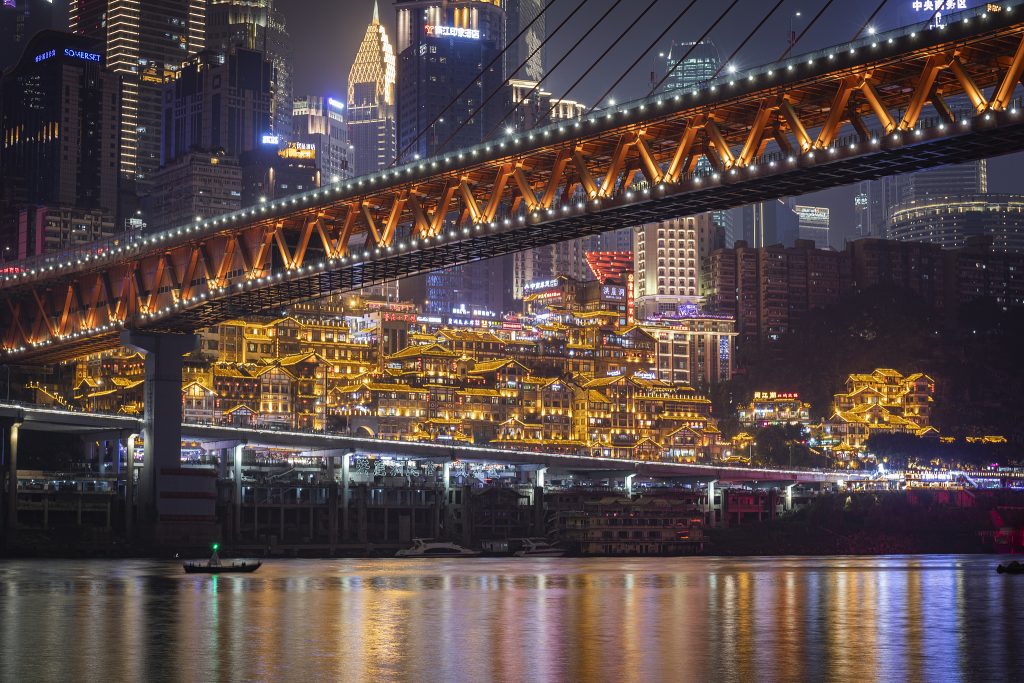
04
Chaotianmen Square
Tickets: Free
Business Hours: All day
Address:Chongqing City, Yuzhong District, Yangtze River Riverside Road, the intersection of two rivers
Raffles Explorer – Cloudland
Tickets: from 120 RMB
Opening hours: 10:00-22:00, latest entry at 21:15
Address: No.8 Jie Sheng Street, Yuzhong District, Chongqing (Gate 14 of Raffles Chongqing)
Chongqing Two Rivers Night Tour
Tickets: 138 RMB.
Business Hours: 18:50-21:00
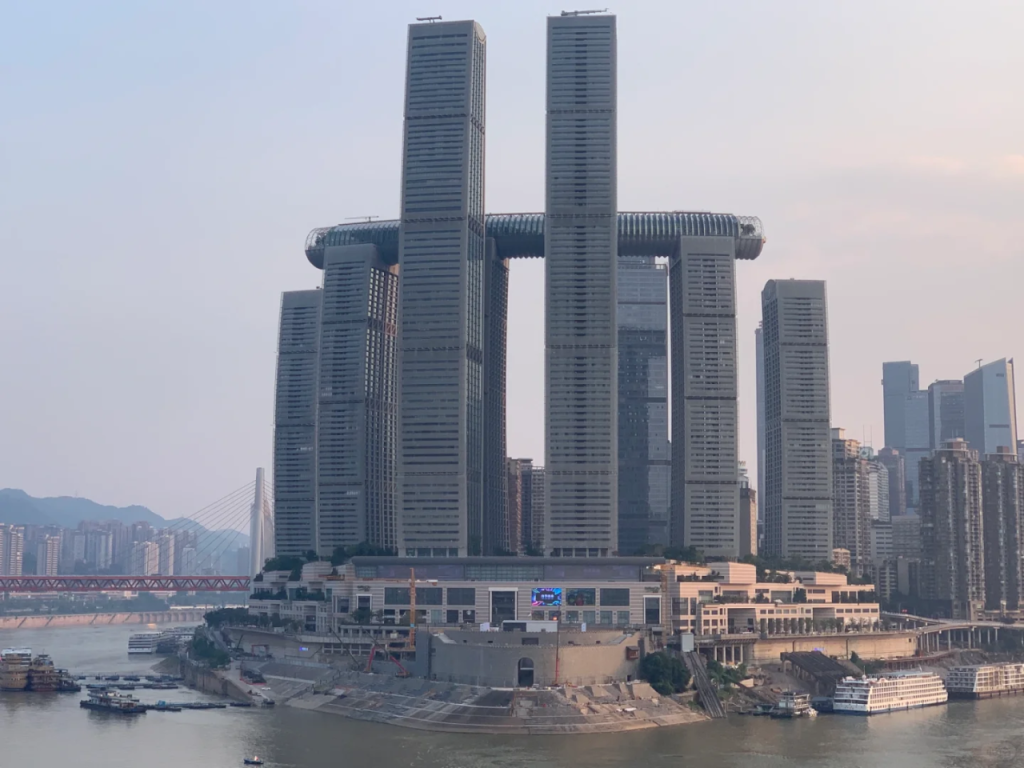
Among the many wharves in Chongqing, Chaotianmen Wharf is undoubtedly the most representative one.
Not only because of its long history, in ancient times, it was also a place to welcome the emperor’s imperial decree, from which the name “Chaotian” was derived.
Until the Ming and Qing Dynasties, Chaotianmen was the most important water dock in Chongqing, where goods from all over the world were gathered and dispersed, with masts standing on top of each other, the sound of people booming, and an endless stream of merchants and travelers.
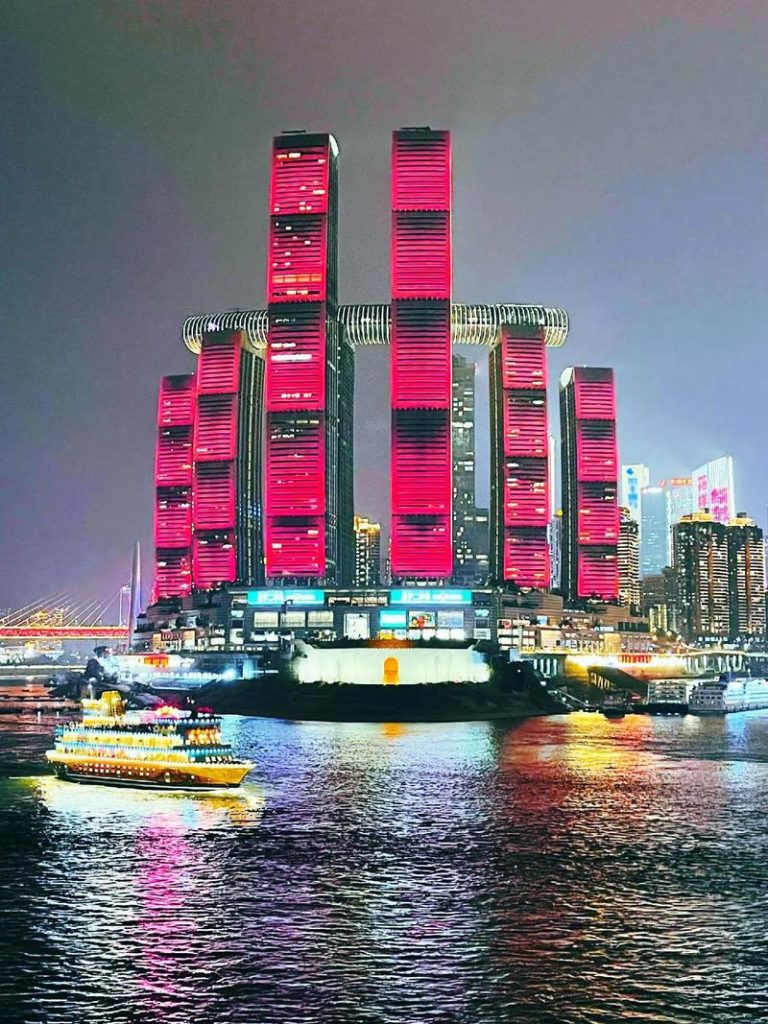
With the development of the times, nowadays Chaotianmen is no longer just a cargo terminal, but a city landmark integrating sightseeing, tourism and leisure.
At the top of Chaotianmen’s most representative skyscraper [Raffles], [Discovery Capsule – Cloudland], you can have a clearer panoramic view of Chaotianmen, and if you are lucky, you can see the magical sight of the two rivers meeting in a “mandarin duck pot”.
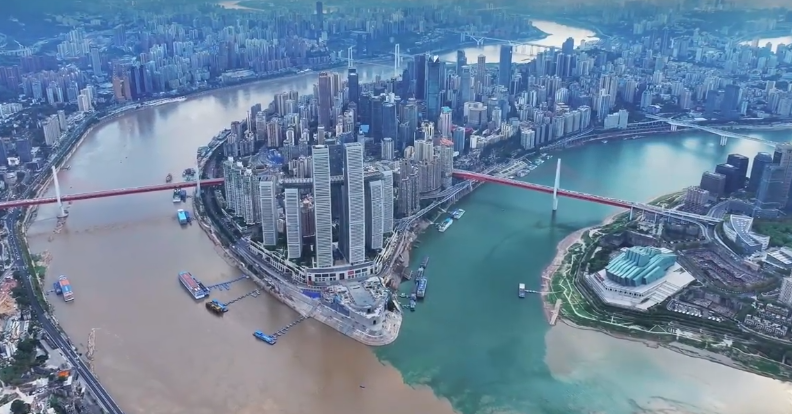
At night, when the lights come on, Chaotianmen Wharf is brilliantly illuminated, and the two-river cruise departs from here, where tourists can enjoy the magnificent scenery of the confluence of the Yangtze River and Jialing River, and feel the magical and unique landscape scenery of Chongqing.
05
Magweikou→Hongyadong Ferry
Tickets: 35 RMB
Address: 150 meters east of Shuangbei Rongchuang Riverside One, Shapingba District, Chongqing (east of the tunnel)
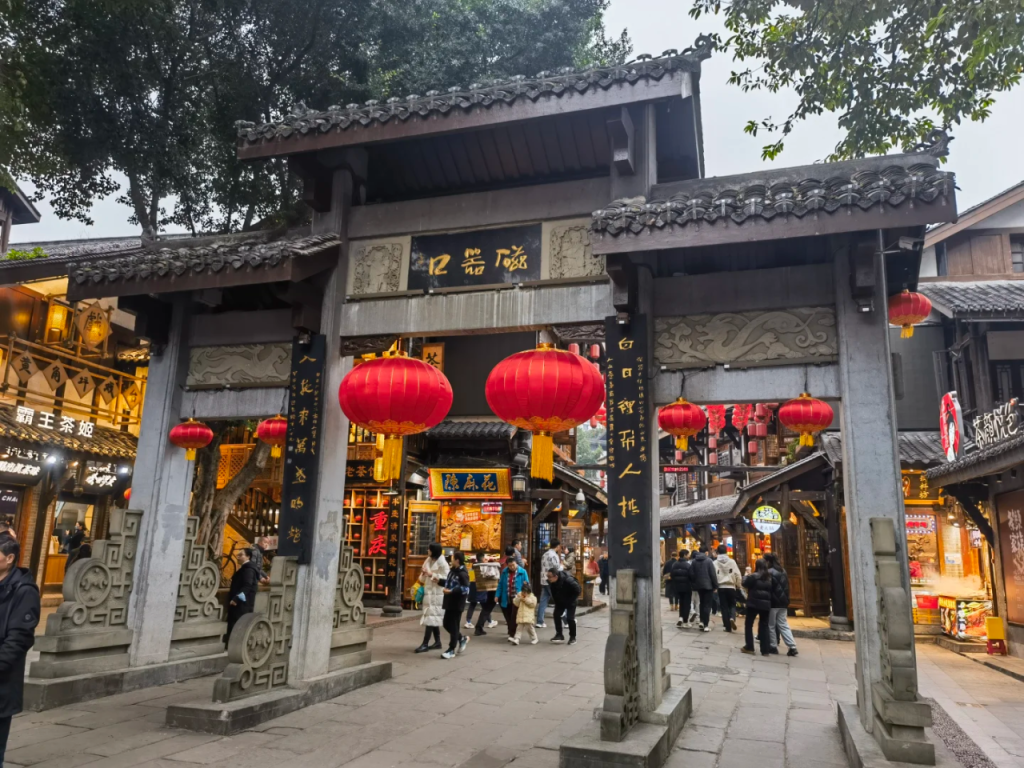
On the second day, take the light rail directly to Chongqing’s Maguikou Ancient Town. As a pair of historical landmarks on the banks of the Jialing River in Chongqing, the ancient town of Maguikou and the Special Steel Ferry Terminal have witnessed the vicissitudes of the Bayu region from an ancient trading town to a modern cultural and tourism resort.
The Magnetic Weapon Port was originally named “White Cliff Field” after the white boulders on the nearby cliffs. At the beginning of the Ming Dynasty, Zhu Yunbao, the Jianwen Emperor, took refuge here and lived in the Bao Lun Temple for several years, so the name was changed to “Longyin Town”.
During the Qing Dynasty, the porcelain industry developed here, and the blue and white porcelain was exported to the whole country through the Jialing River wharf, from which the name of “Magnetic Weapon Mouth” was derived.
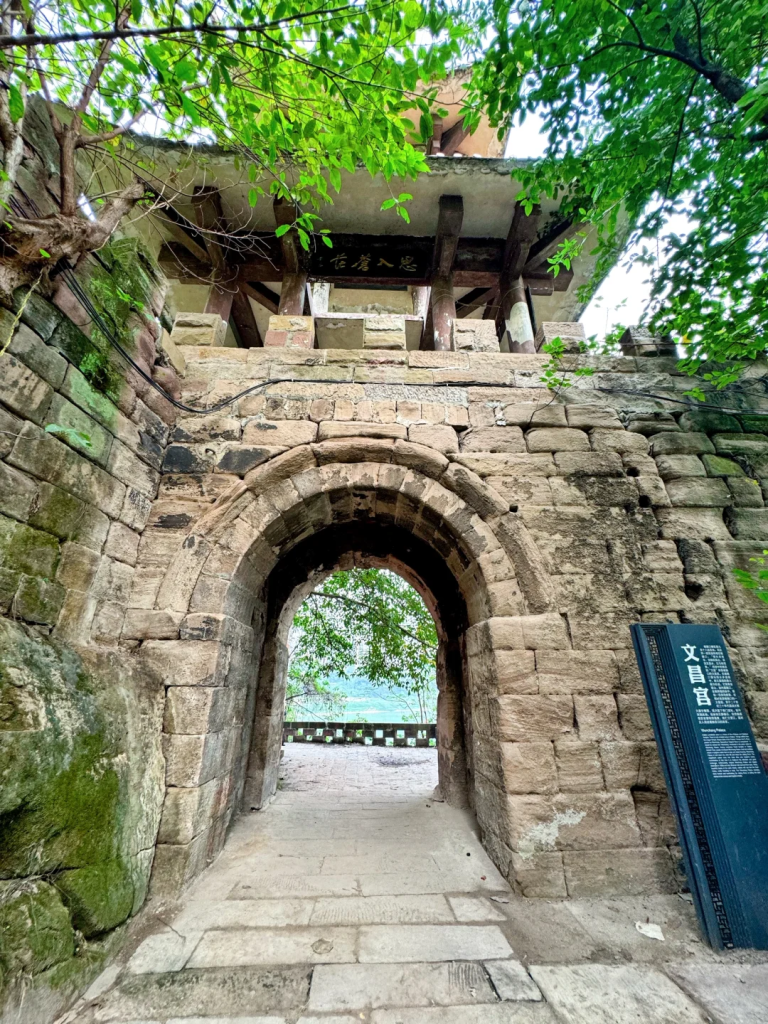
The origin of the Special Steel Ferry is closely related to the internal relocation of industries during the war period. At that time, a large number of arsenals set up freight wharves here, becoming an important node for wartime material transportation.
Nowadays, the Special Steel Ferry has been transformed from an industrial relic to a tourist hub. Visitors can walk from the Maguikou Ancient Town to the Special Steel Ferry through the footpath.
Along the way, you can enjoy the ships coming and going in the river, which is more pleasant, and then take the ferry back to Hongyadong in about 50 minutes, enjoying the scenery of Jialing River along the way.
